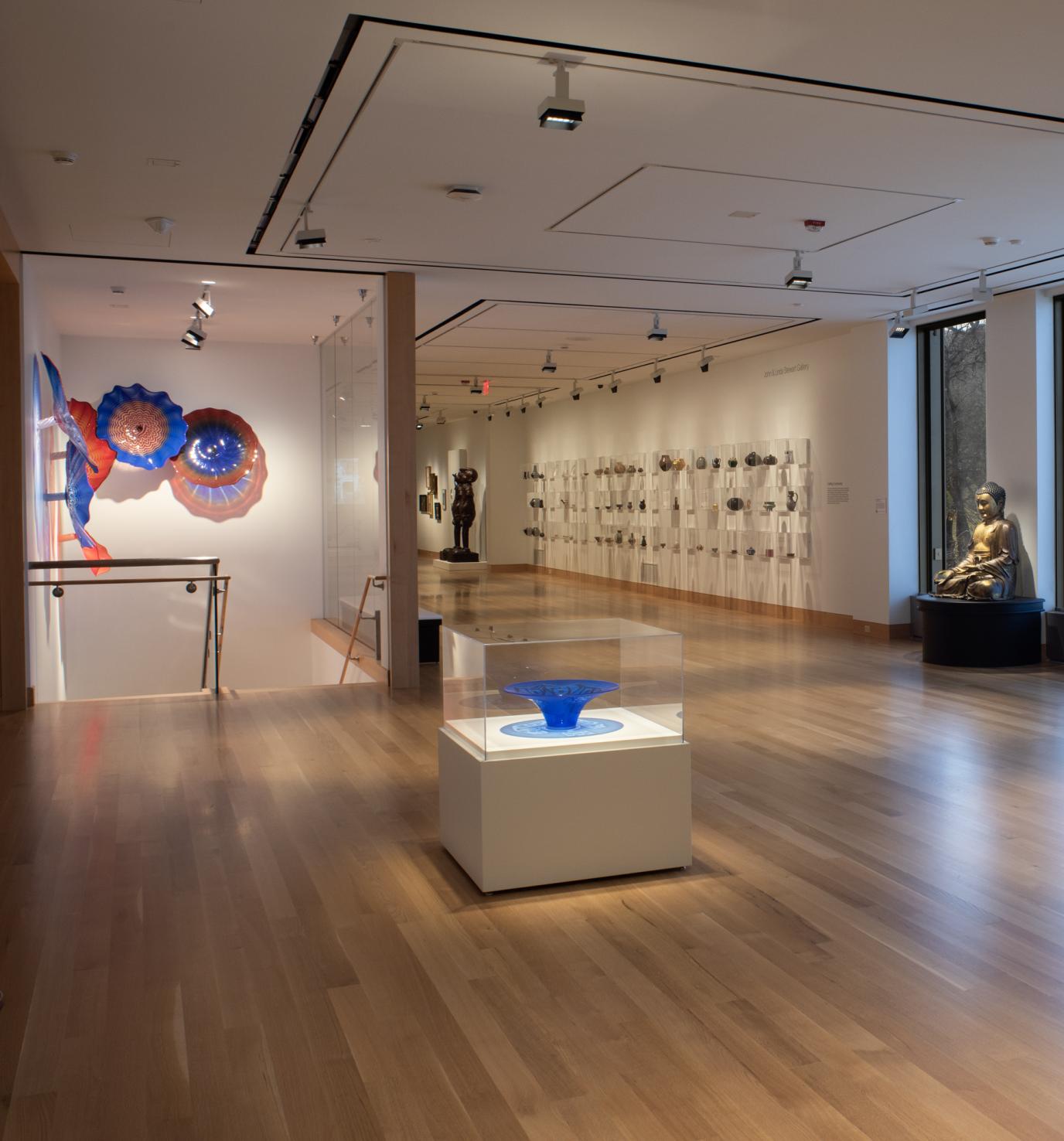
Accessibility
We are committed to accessibility and our efforts are ongoing. To request an accommodation for an upcoming event or visit to the Museum, please contact us.
Accessibility jump links
Getting to the Museum
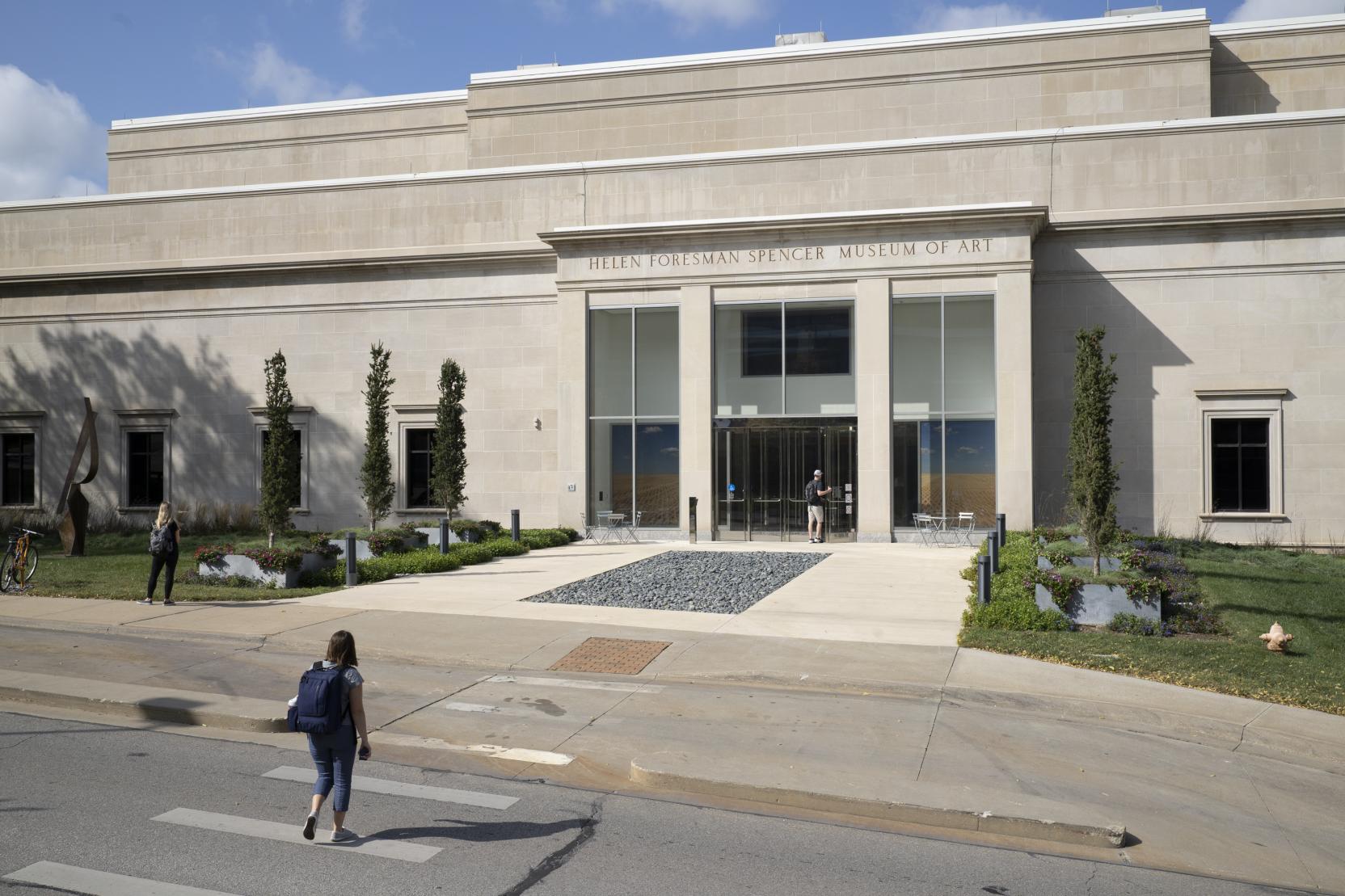
Drop off
There is a drop-off area at the front entrance of the Museum on Mississippi Street. This is a five-minute load/unload zone and vehicles must be not left unattended. View all parking options near the Museum.
Accessible parking
There are two accessible parking spots in front of the Museum for those with ADA placards. Please bring your license plate number to the Welcome Desk for validation. These are filled on a first-come, first-serve basis. If you have driven to the Museum anticipating to park in these spaces and they are full, please call 785-864-0130.
Public transport
There are three accessible public transport options to the Museum:
Public bus
If you’re not sure which bus route to take you can visit the Lawrence Transit "Routes" website, download Lawrence Transit’s free app, or use Google Maps.
Most bus routes will drop visitors off in front of the Kansas Union. Once you arrive at the Kansas Union bus stop:
- Exit the bus and enter the Kansas Union from Jayhawk Blvd. You are on level 4 in the Kansas Union
- Take the elevator to level 1
- Turn left and exit through the glass doors
- Cross Mississippi Street and enter the Spencer Museum of Art
At the Museum
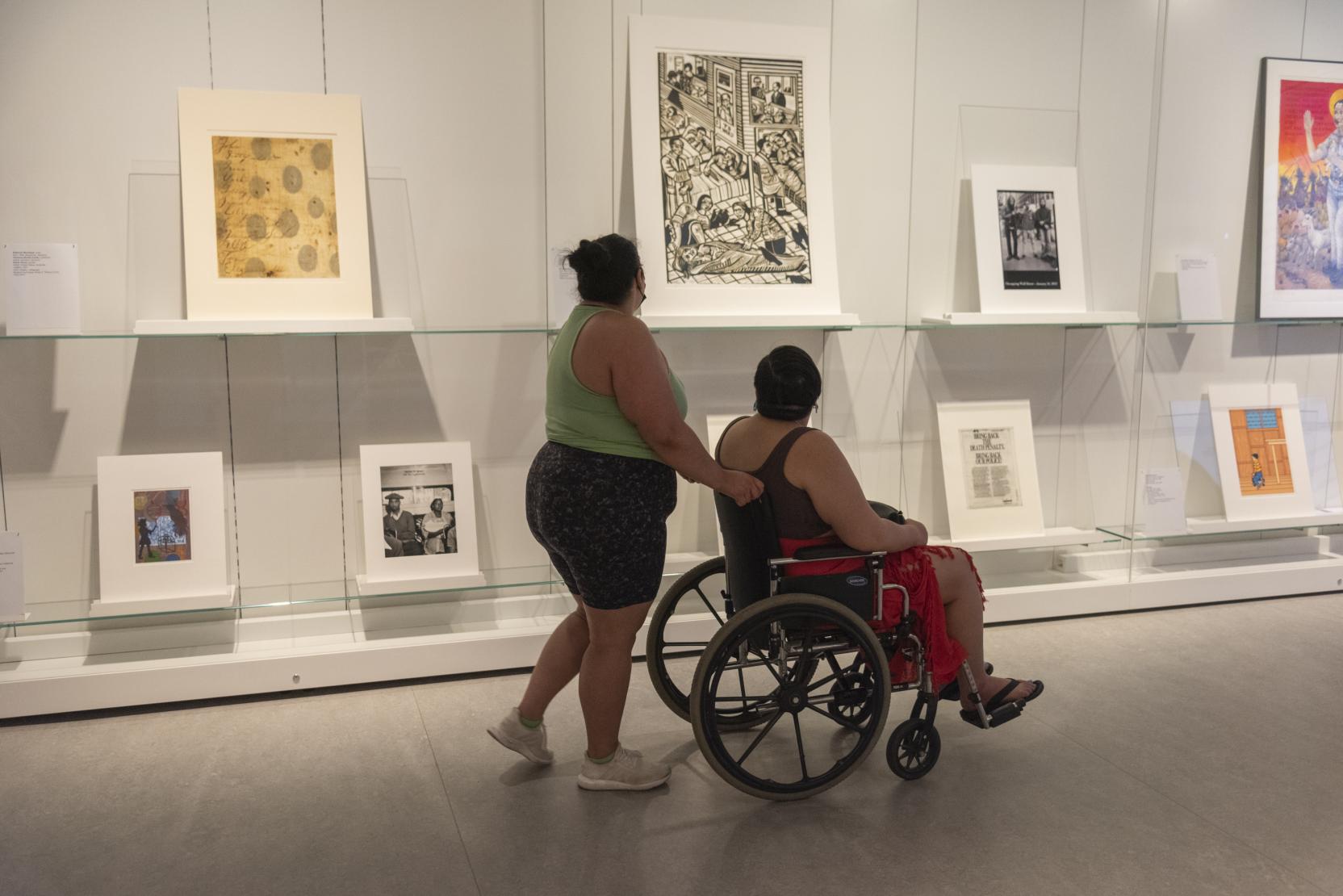
Wheelchairs and seating
The Museum is accessible to wheelchair users and visitors who need to avoid using stairs.
There is an elevator in the back left corner of the third-floor galleries to move between the third and fourth floors.
A limited number of wheelchairs are available to borrow at our Welcome Desk. Seating for wheelchairs at programs and events may be reserved in advance.
There are benches in three of the four fourth-floor galleries with additional seating located in the Stewart Gallery and the Lee Study Center.
Camp stools may be found in various locations on the fourth floor, including outside the Marshall Balcony and next to the in-gallery elevator.
Restrooms
Accessible restrooms are located off the lobby on the third floor. There are no restrooms on the fourth floor.
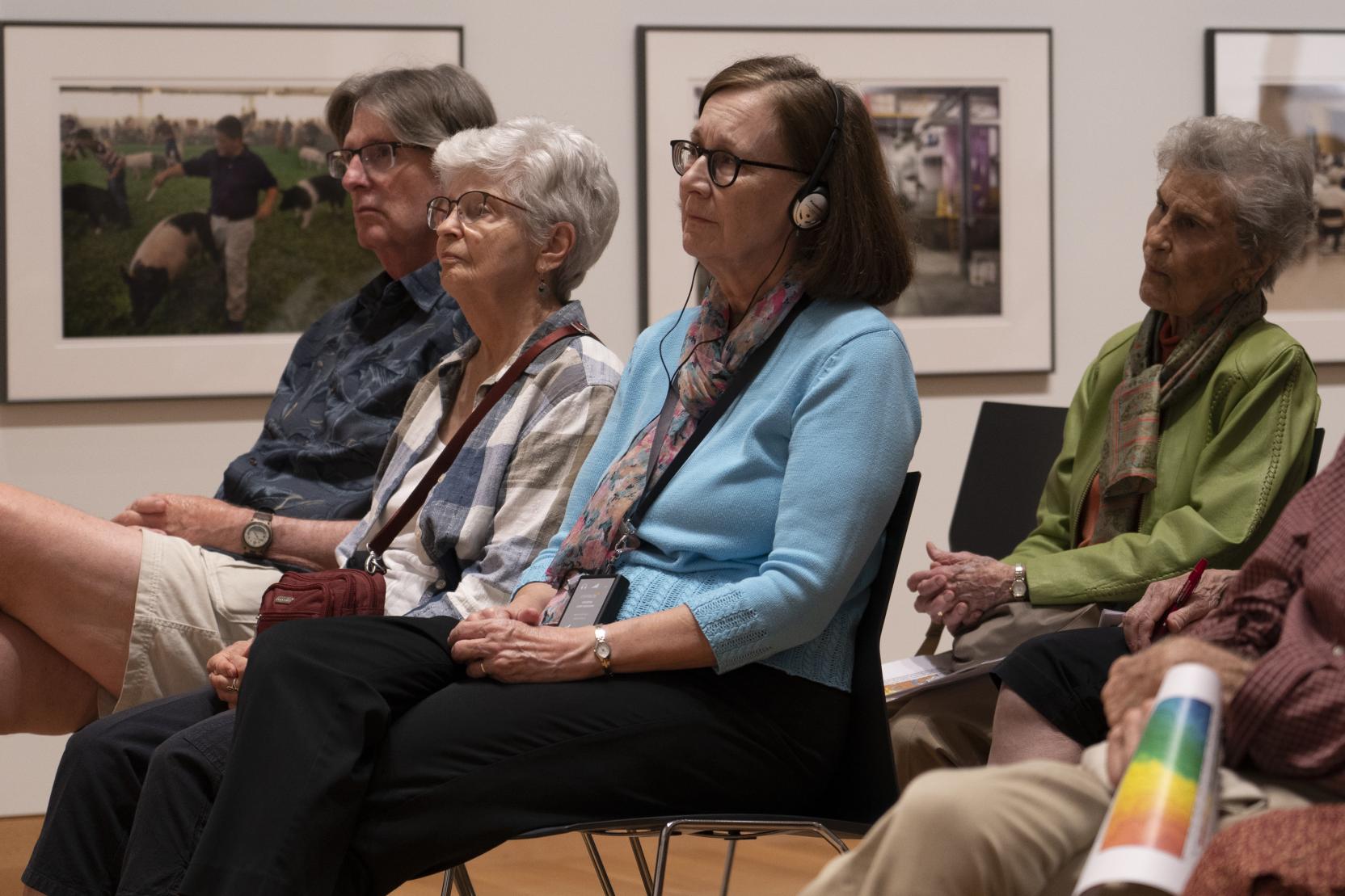
Assistive listening devices
An audio looping system is available for most public programs. Visitors using T-coil or telecoil hearing aids or cochlear implants can access this system. Visitors with other hearing devices may request a headset at the Welcome Desk to access the system.
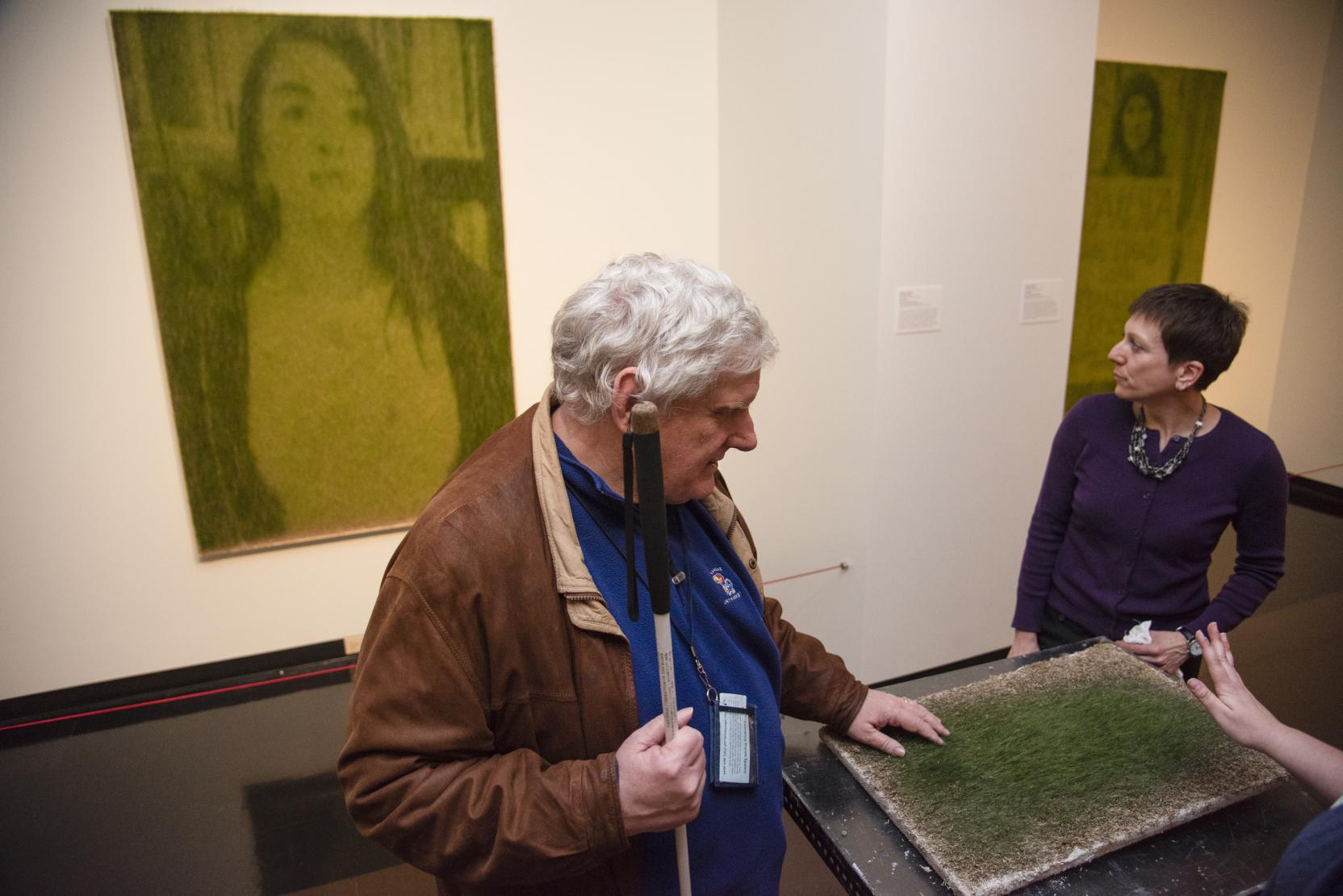
Art Beyond Sight Tours
The Museum offers gallery tours for visitors with low or no vision. These tours include audio description by a trained guide supplemented by tactile and other sensory materials. To schedule a tour please contact Kristina Walker at least two weeks in advance of when you plan to visit.
Service animals
Service animals are welcome in the Museum but must remain on a leash.
Low noise
When it is not being used for a class, the Lee Study Center is open to visitors seeking a quieter space for reflection and stillness. We also have disposable ear plugs available at the Welcome Desk.
Contact us
For general questions about accessibility, please reach out to: